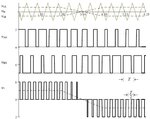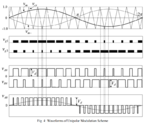kathmandu
Full Member level 5

- Joined
- Dec 7, 2015
- Messages
- 298
- Helped
- 7
- Reputation
- 14
- Reaction score
- 7
- Trophy points
- 1,298
- Activity points
- 4,441
The switching frequency is 16kHz. I've choose a 50Hz transformer because it copes better with overloads (2-3 times the rated power) and I don't have to deal with high voltages.




